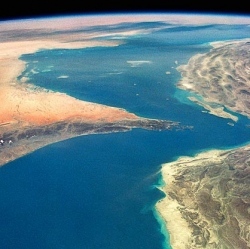
Small fusion-powered rockets could one day help propel spacecraft at high speeds to nearby planets or even stars, a NASA-funded spaceflight company says. Another use for such fusion rockets is to deflect asteroids that might strike Earth and to build manned bases on the moon and Mars, the researchers say.
Rockets fly by hurling materials known as propellants away from them. Conventional rockets that rely on chemical reactions are not very efficient when it comes to how much thrust they generate, given the amount of propellant they carry, which has led rocket scientists to explore a variety of alternatives over the years.
An option now used in spacecraft is the ion drive, which generates thrust by using electricity to accelerate electrically charged ion propellants. Ion drives are far more efficient than chemical rockets, but are limited by the amount of electricity they can harvest via solar panels or generate using radioactive materials.
Instead of chemical rockets or ion drives, scientists have also suggested using fusion rockets propelled by the same nuclear reactions that power stars. These rockets would not only be efficient, but also generate vast amounts of electricity.
However, so far, no one has built a fusion reactor that generates more energy than it consumes. Moreover, the fusion reactors that are under development are huge, making them difficult to hoist into space.
But now, researchers funded by NASA are developing small fusion rockets.
"It’s technology that enables really interesting robotic and human missions to Mars and Pluto, and it is also potentially a way of getting into interstellar space," said Michael Paluszek, president of Princeton Satellite Systems in Plainsboro, New Jersey.
The large fusion reactors under development today, such as the International Thermonuclear Experimental Reactor (ITER), usually strive to generate hundreds of megawatts of power. In contrast, Paluszek and his colleagues at Princeton Satellite Systems are designing reactors meant to produce only a dozen megawatts or so. This humbler goal results in a smaller, lighter reactor that is easier to build and launch into space "for practical robotic and human missions," Paluszek said.
In addition, these small fusion reactors are much cheaper than larger devices. Paluszek noted that, whereas modern fusion experiments might cost $20 billion, a prototype fusion rocket the researchers plan to develop should cost just $20 million. So far, they have received three NASA grants to fund the project, he said.
The aim for the fusion drives is to get about 1 kilowatt of power per 2.2 lbs. (1 kilogram) of mass. A 10-megawatt fusion rocket would therefore weigh about 11 tons (10 metric tons).
"It would probably be 1.5 meters [4.9 feet] in diameter and 4 to 8 meters [13 to 26 feet] long," Paluszek said.
Nuclear fusion requires extremely high temperatures and pressures to force atoms to fuse, a process that converts some of the mass of the atoms into energy. The fusion reactors that Princeton Satellite Systems is developing uses low-frequency radio waves to heat a mix of deuterium and helium-3, and magnetic fields to confine the resulting plasma in a ring. (Deuterium is made of hydrogen atoms that each have an extra neutron; helium-3 is made of helium atoms, each of which is missing a neutron; and plasma is the state of matter found in stars, lightning bolts and neon lights.)
As this plasma rotates in a ring, some of it can spiral out and get directed from the fusion rocket’s nozzle for thrust. "We can get very high exhaust velocities of up to about 25,000 kilometers per second [55.9 million mph]," Paluszek said.
The large amounts of thrust this fusion rocket may deliver compared to its mass could enable very fast spacecraft. For instance, whereas round-trip crewed missions to Mars are estimated to take more than two years using current technology, the researchers estimated that six 5-megawatt fusion rockets could accomplish such missions in 310 days. This extra speed would reduce the risks of radiation that astronauts might experience from the sun or deep space, as well as dramatically cut the amount of food, water and other supplies they would need to bring with them.
